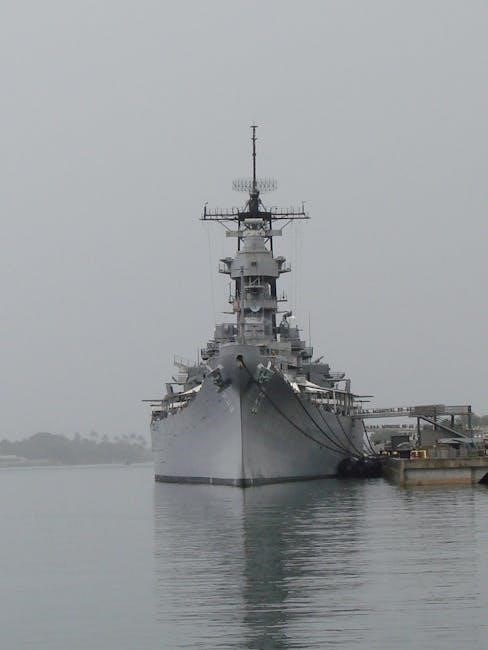The US Navy urinalysis instruction is a crucial program for maintaining fleet readiness and ensuring sailor health, with procedures outlined in official
- naval
guidelines always.
Overview of Urinalysis in the US Navy
The US Navy implements urinalysis as a vital tool for monitoring and maintaining the health and readiness of its personnel. This program is designed to detect and prevent the use of illicit substances, ensuring a safe and effective working environment. Through urinalysis, the Navy can identify potential health risks and take proactive measures to address them. The process involves the collection and analysis of urine samples, which are then tested for various substances. The results of these tests are used to inform decisions regarding personnel fitness for duty and to provide support for those who may be struggling with substance abuse. The Navy’s urinalysis program is an essential component of its overall strategy for promoting sailor health and well-being, and it plays a critical role in maintaining fleet readiness and effectiveness. The program is continually evaluated and refined to ensure its effectiveness.

Importance of Urinalysis in the US Navy
Urinalysis is essential for identifying health issues and
- substance
abuse in naval personnel always effectively.
Role of Urinalysis in Maintaining Fleet Readiness
The role of urinalysis in maintaining fleet readiness is multifaceted, involving the detection of substances that could impair sailor performance and compromise naval operations. Urinalysis helps to identify sailors who may be unfit for duty due to substance use, allowing for timely intervention and treatment. This, in turn, helps to prevent accidents and ensure the safety of personnel and equipment. By monitoring sailor health through urinalysis, the US Navy can maintain a ready and capable fleet, with sailors who are able to perform their duties effectively and efficiently. The use of urinalysis in this context is a key component of the Navy’s overall strategy for maintaining fleet readiness and achieving its mission objectives, which is critical to national security and defense. Urinalysis plays a vital role in this effort, and its importance cannot be overstated.
US Navy Urinalysis Instruction Guidelines
Official naval guidelines provide detailed procedures for implementing urinalysis instruction programs effectively always.
Procedures for Collecting and Testing Urine Samples
The procedures for collecting and testing urine samples in the US Navy involve several key steps, including proper collection and handling of samples, as outlined in official naval guidelines.
These steps are designed to ensure the accuracy and reliability of test results, which are critical for maintaining fleet readiness and ensuring sailor health.
The procedures typically involve the use of
- standardized
collection kits and strict chain-of-custody protocols to prevent contamination or tampering with samples.
Additionally, samples are typically tested using
- advanced
laboratory equipment and techniques, such as gas chromatography and mass spectrometry, to detect and quantify various substances.
The US Navy has implemented these procedures to ensure the integrity and validity of urinalysis test results, which are used to support a range of critical naval operations and personnel management functions, with a focus on safety and effectiveness always.

Interpreting Urinalysis Results in the US Navy
Urinalysis results are carefully evaluated by medical professionals using
- standard
protocols to determine sailor fitness for duty always correctly online.
Understanding Urinalysis Test Results and Their Implications
To accurately interpret urinalysis test results, naval personnel must consider various factors, including the type of test administered and the individual’s medical history, as outlined in official naval guidelines. The results are typically categorized into different levels of concern, ranging from normal to abnormal, with each level having distinct implications for the individual’s health and readiness for duty. Understanding these implications is crucial for ensuring the overall well-being of sailors and the effectiveness of naval operations. By analyzing test results in the context of individual and collective health, the US Navy can identify potential issues and take proactive measures to address them, ultimately maintaining a healthy and capable fleet. This process involves careful evaluation and
- follow-up
testing to confirm initial findings and determine the best course of action.
US Navy Urinalysis Instruction for Specific Substances
The program tests for various substances including drugs and
- alcohol
to ensure sailor safety always.
Detection and Identification of Illicit Substances in Urine Samples
The US Navy urinalysis instruction includes protocols for detecting and identifying illicit substances in urine samples, which is crucial for maintaining a safe and healthy environment.
This process involves the use of advanced technology and equipment, such as gas chromatography and mass spectrometry, to analyze urine samples and detect the presence of illicit substances.
The results of these tests are then used to identify sailors who may be using illicit substances and provide them with the necessary support and resources to overcome their addiction.
The detection and identification of illicit substances in urine samples is an important aspect of the US Navy urinalysis instruction, as it helps to prevent the use of illicit substances and promote a culture of safety and well-being.
The US Navy uses a variety of methods to detect and identify illicit substances, including immunoassay and confirmatory testing.
These methods are designed to provide accurate and reliable results, and are used in conjunction with other protocols to ensure the effectiveness of the urinalysis program.

Challenges and Limitations of Urinalysis in the US Navy
Urinalysis in the US Navy faces challenges including false positives and negatives, with technological limitations affecting overall program effectiveness and accuracy always online.
Addressing False Positives and False Negatives in Urinalysis Results
The US Navy has implemented measures to address false positives and false negatives in urinalysis results, including confirmatory testing and
- quality
control procedures.
These measures help to ensure the accuracy and reliability of urinalysis results, which is critical for maintaining fleet readiness and ensuring sailor health.
The Navy uses advanced technology and equipment to conduct urinalysis testing, and results are carefully reviewed and interpreted by trained personnel.
In cases where false positives or false negatives are suspected, additional testing and evaluation are conducted to confirm the results.
The Navy’s urinalysis program is designed to detect and prevent substance abuse, and addressing false positives and false negatives is an important part of this effort.
By using a combination of technology, quality control, and careful review, the Navy is able to ensure the accuracy and reliability of urinalysis results.

Future Developments in US Navy Urinalysis Instruction
New technologies and methods are being researched and implemented to improve the urinalysis instruction program and its effectiveness in the US Navy every day always online.
Advances in Urinalysis Technology and Their Potential Impact on US Navy Operations
The development of new urinalysis technologies has the potential to significantly impact US Navy operations, with improved accuracy and efficiency in testing procedures.
These advances include the use of
- point-of-care
devices and
information systems, which enable rapid and reliable testing of urine samples.
The implementation of these technologies can enhance the effectiveness of the US Navy’s urinalysis program, allowing for quicker detection and identification of substances, and ultimately supporting the overall mission of the Navy.
The use of advanced technologies can also help to reduce errors and increase productivity, making the urinalysis process more efficient and cost-effective.
Overall, the integration of new urinalysis technologies has the potential to greatly benefit US Navy operations, and support the health and readiness of sailors.